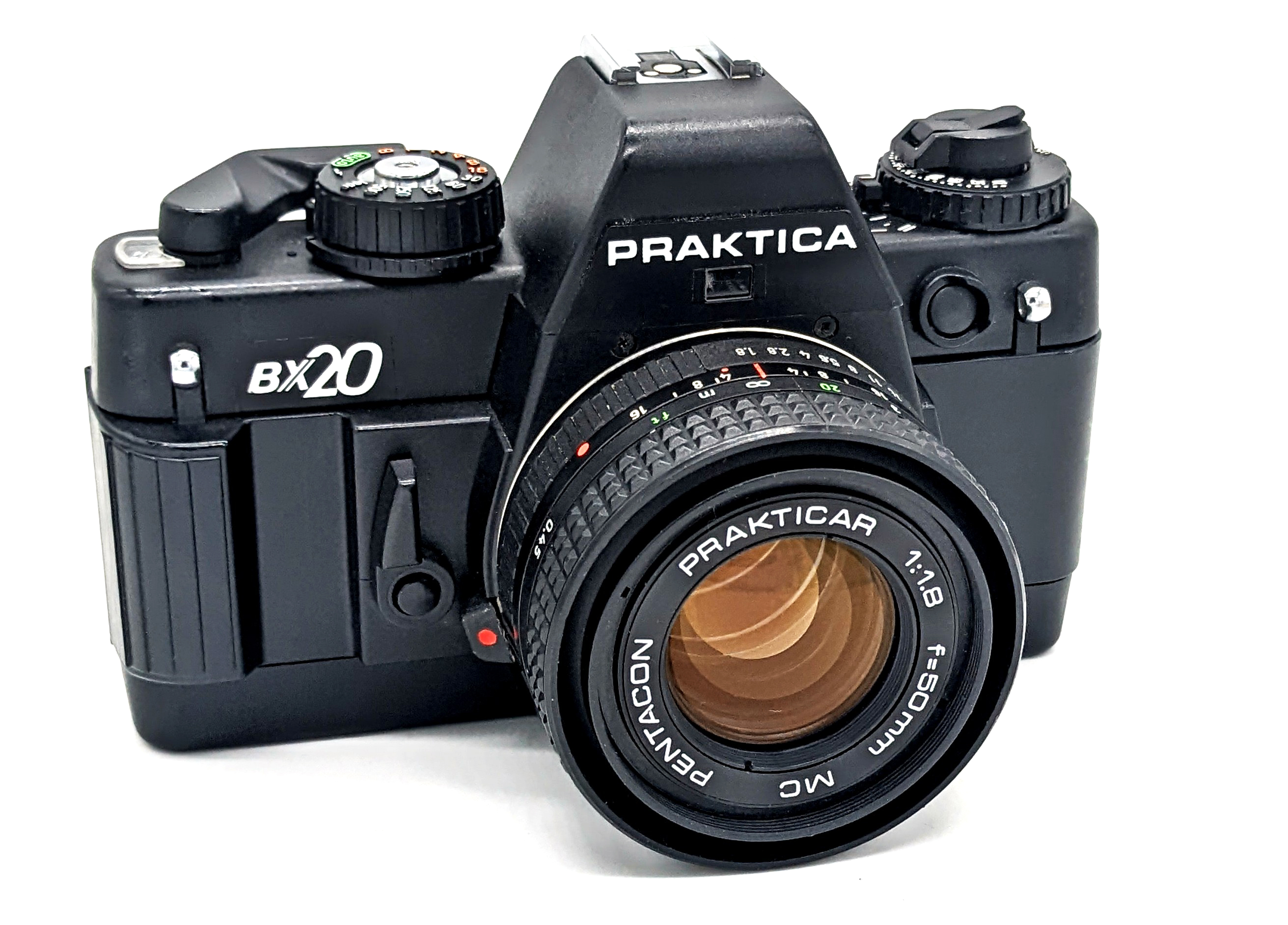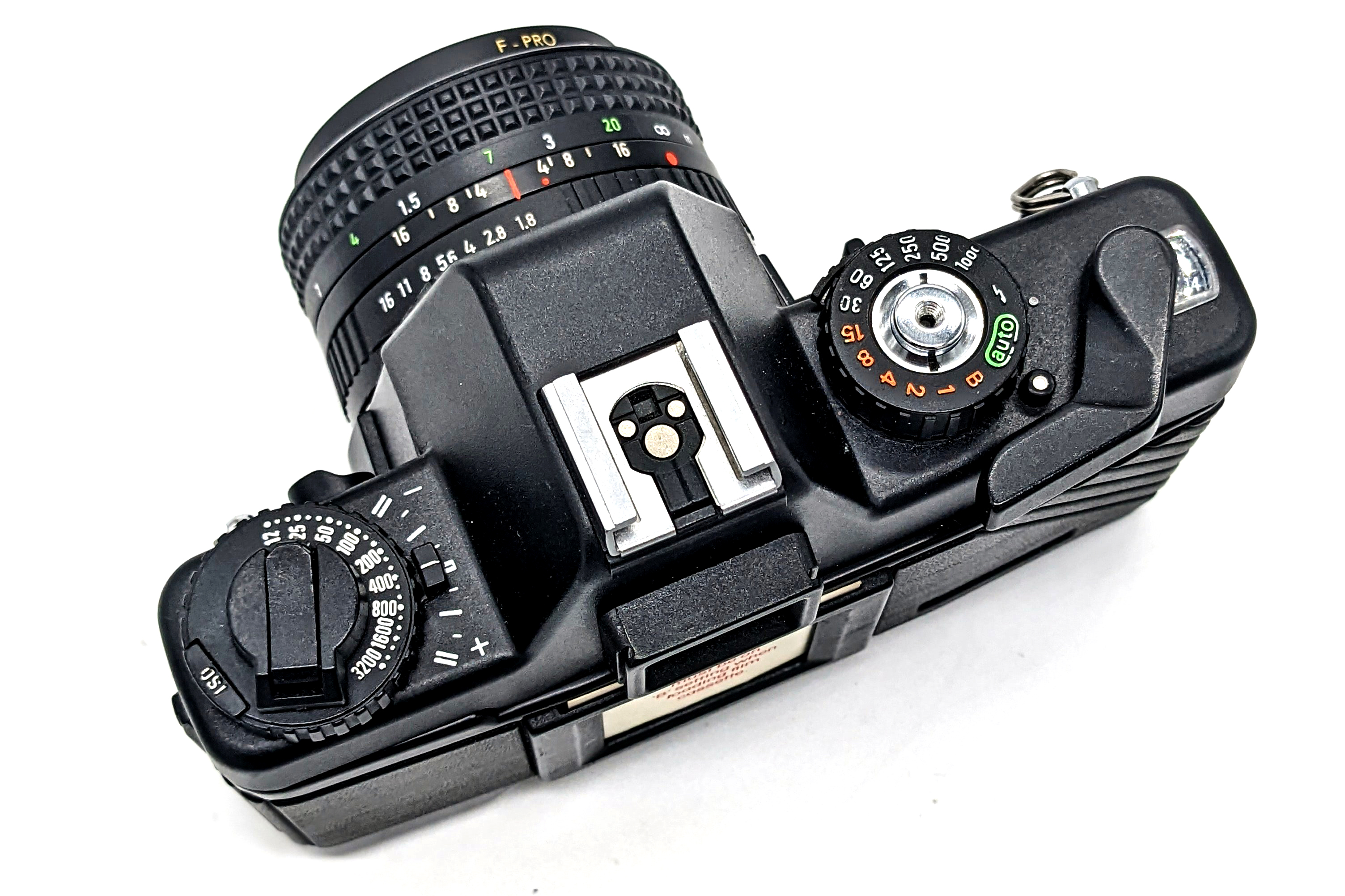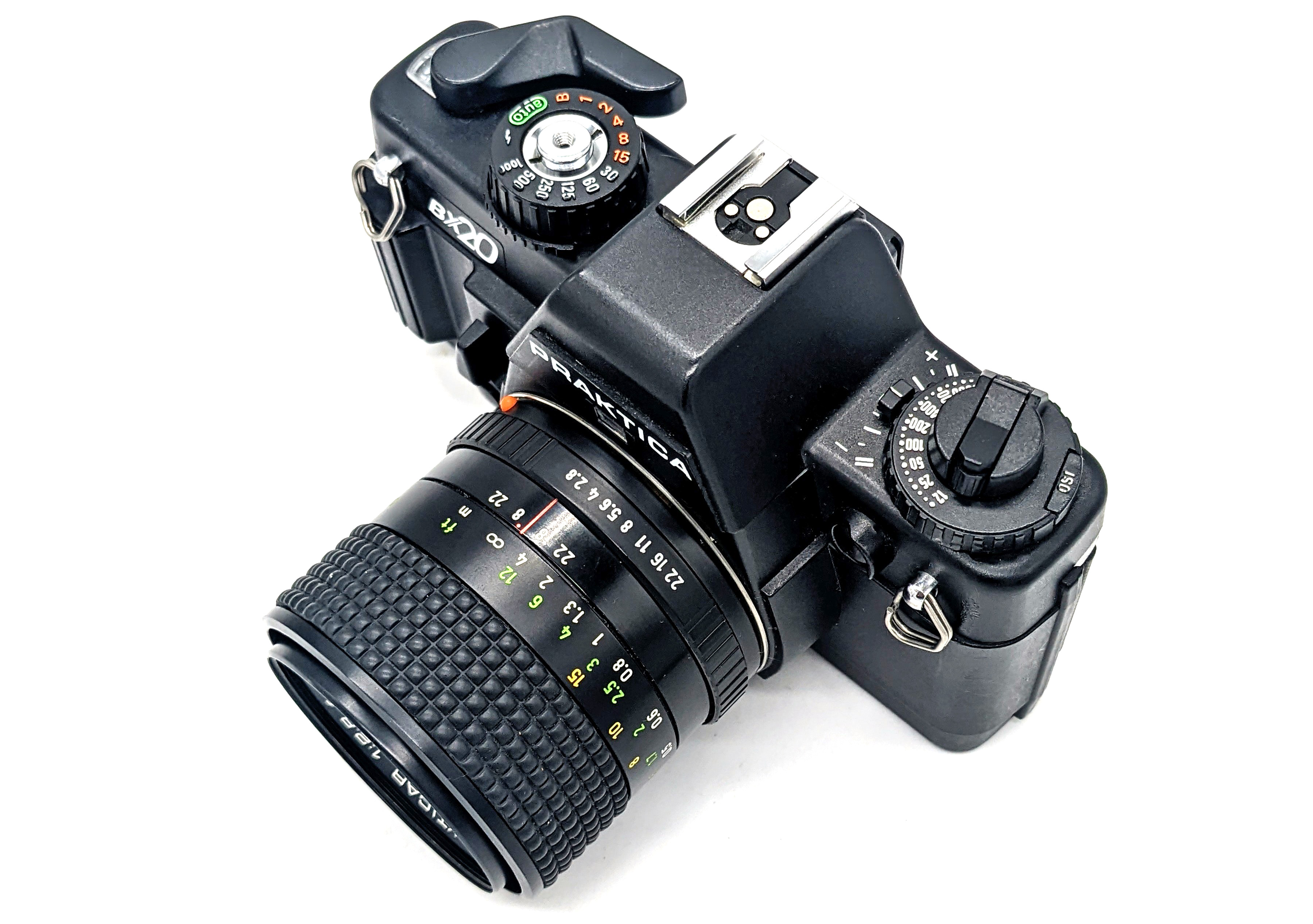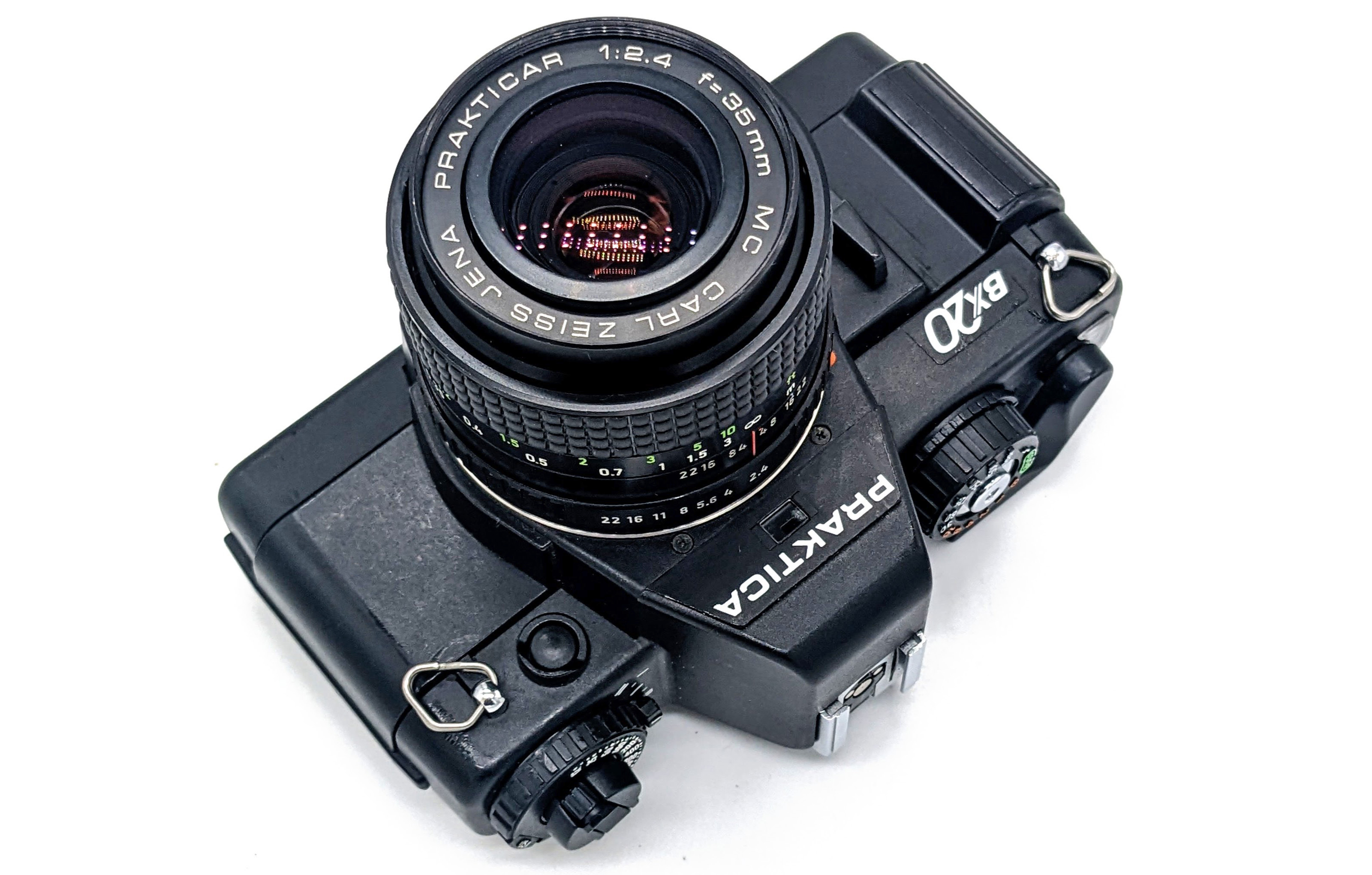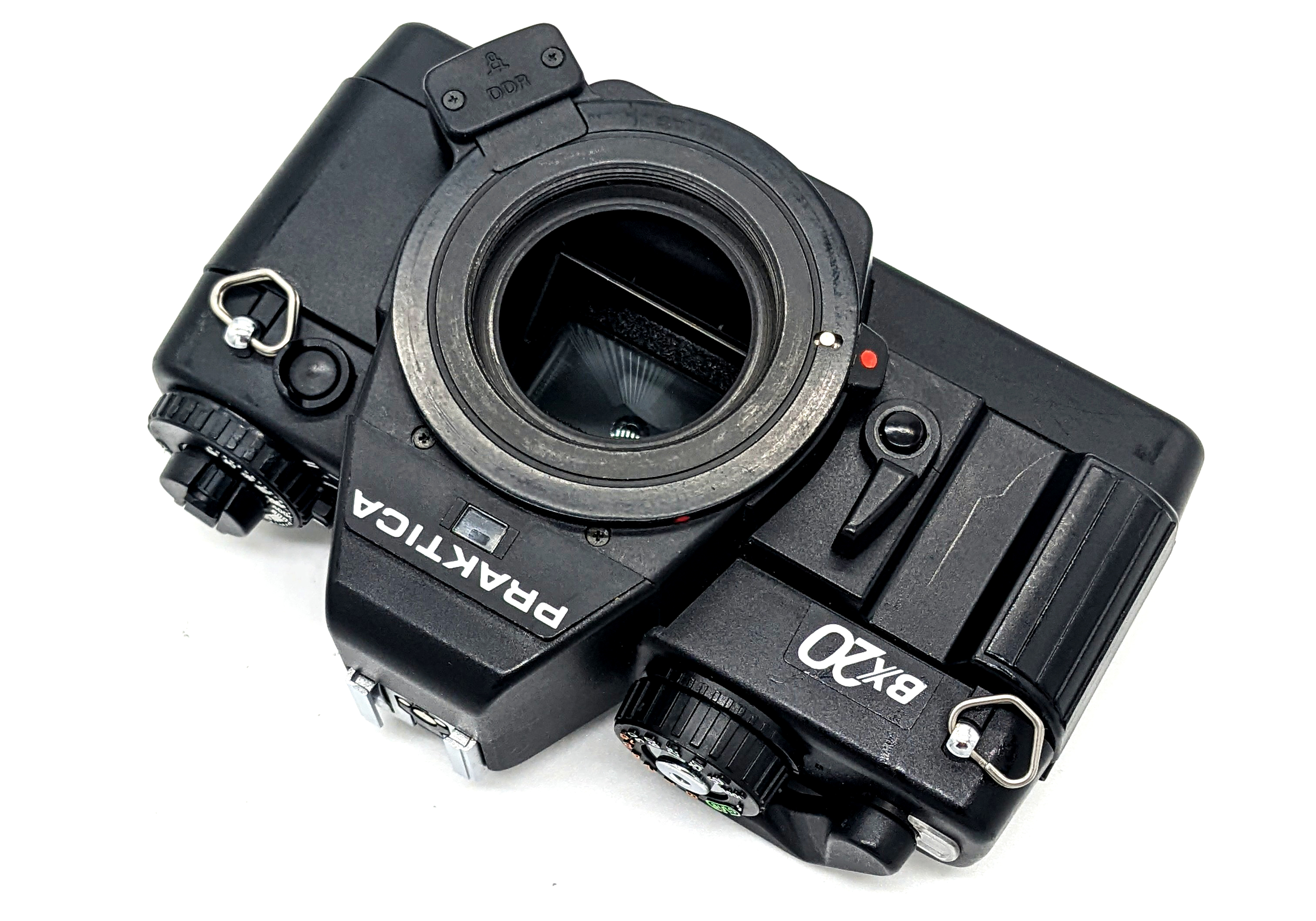
The 1976 Chinon CE-II was one of a series of cameras produced by Cosina and Chinon during the 1970s that implemented an innovative method for achieving a primitive aperture-priority autoexposure with all M42 auto-diaphragm lenses, regardless of manufacturer. No other M42 camera line could do this.
While deploying TTL light metering, the post-1964 third generation of M42 camera bodies used a rather painful method to achieve it. While the camera body could hold the lens’ aperture wide open (for focusing purposes), one had to depress an external button or engage a switch to turn on the light meter. Once the switch or button is activated, the aperture of the lens stops down to the taking aperture (thus darkening the viewfinder), and from that point you can then fiddle with the shutter speeds and aperture until a needle in the viewfinder fell into the right spot. You then deactivate the switch/button, which opens the aperture all the way back up, and then you take the photo with the settings you just determined.
By the early 1970s, many manufacturers’ solution to this two-step process was to develop proprietary M42 lenses with an extra linkage that could permit the lens to “communicate” the selected aperture with the camera body so that no physical “stopping down to meter the scene” was required. Examples of these cameras included the the Praktica LLC (1969), the Olympus FTL (1971), the Fujica ST801 (1972), and the Pentax Spotmatic F (1973). These cameras did not have “autoexposure” and still required the user to fiddle with both the shutter speed and aperture to achieve an appropriate combination.
Cosina (and ultimately Chinon) took a different approach to TTL metering by combining the system shutter button and the stop down switch to achieve a kind of aperture-priority autoexposure. Essentially, after setting the shutter dial to “Auto,” a half-press of the shutter button would stop the lens down so that the camera could meter at the selected aperture (this would darken the viewfinder). Through the viewfinder, the camera would communicate to you what the shutter speed would be at that selected aperture. Once you have the right aperture setting for the shutter speed you want, you press the shutter button all the way down, which nearly-instantaneously stops down the lens and takes the photo. This operation required an electronically-controlled shutter.
The first camera body to use this system was the 1972 Cosina Hi-Lite EC. The other bodies with this autoexposure technology included the Chinon CE (1974), the Chinon CE-II (1976), the Cosina Hi-Lite ECL (1977), and the Chinon CE-3 (1978). Chinon and Cosina also made de-featured versions of these models that retained the shutter-button stop down mechanism, but did not have aperture-priority autoexposure.
The CE-II is typical of mid-1970s “normal” camera bodies: quite large and heavy, but well-built and sturdy. At release in 1976, it retailed for about $250 with a 55mm f/1.7 lens, with the optional 55mm f/1.4 being much more expensive. Besides the autoexposure system, the CE-II’s main claim to fame is having a top shutter speed of 1/2000, which was as fast as SLRs achieved during the era. Like many Cosina and Chinon products, the CE-II was rebadged and slightly modified in various forms for different markets, including the Revueflex 5000 EE, the Revueflex 5005, and the Porst Reflex M-CE.

Specifications
| Lens Mount | M42 |
| Shutter Speeds | 2 sec. – 1/2000 |
| Viewfinder Coverage | 92% |
| Focusing Screen | Microprism / Ground Glass |
| Viewfinder Info | Shutter Speeds (Needle) |
| Shutter | Electronic Metal Vertical |
| Battery | S28PX / 4SR44 (6V Silver Oxide) |
| ASA | 25-3200 |
| Meter | TTL; Silicon Blue Cells (SBC) |
| Weight | 760g |
| Self-Timer | Yes |
| X-Sync Speed | 1/90 |
| Battery Check? | Yes |
| Exposure Lock? | External Switch |
| Multiple Exposure? | Yes |
| Motor Drive? | No |
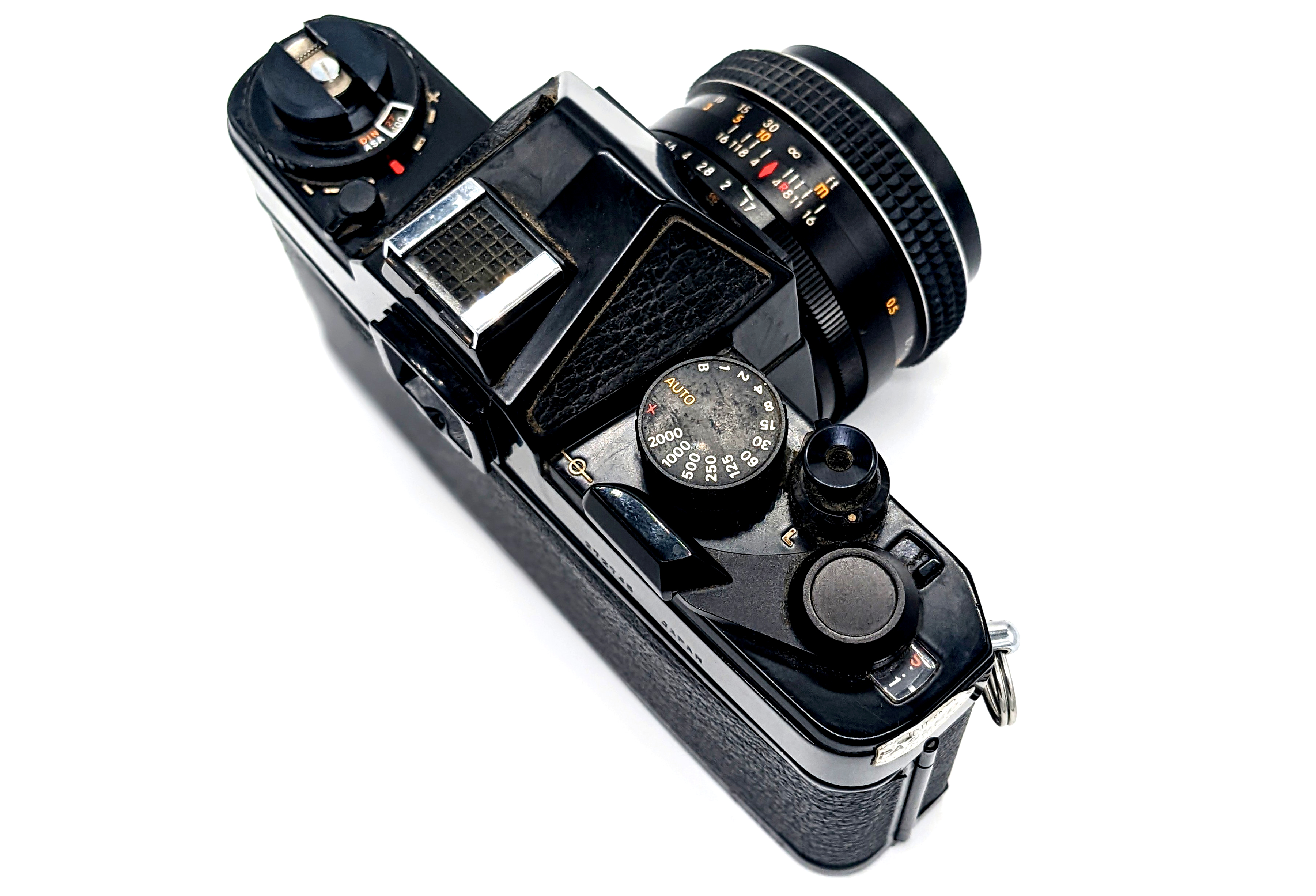
Operation
While the CE-II did not have interchangeable focusing screens, motor drives, or a long list of dedicated accessories for specific tasks, it does contains nearly every feature that an advanced-amateur camera could have during the mid-1970s. Let’s run down the highlights of its functionality.
Viewfinder: The CE-II has a viewfinder of fairly average brightness with an average or slightly-below average coverage of 92%. The fixed focusing screen is a standard microprism / ground glass type. The available shutter speeds are displayed on the left side of the viewfinder. In my opinion, the CE-II’s rather ho-hum viewfinder is one of its weaker aspects.
Shooting: As noted above, the CE-II’s aperture-priority operation with all M42 auto-diaphragm and its 1/2000 top shutter speeds are its coolest features. After setting the shutter speed dial to “Auto,” a half-press of the shutter button stops the lens down to the selected aperture and the viewfinder displays the appropriate shutter speed. The exposure lock function is triggered by half-pressing the shutter button and then turning a dial on the body besides the lens. After taking a shot, you then return the dial to its original position.
In metered manual mode, you can select an aperture and a shutter speed and then half-press the shutter button. The viewfinder will display what the shutter speed should be set to given the selected aperture.
Although the shutter is electronically-controlled, the CE-II has a backup mechanical speed of 1/90, selectable as the “X” on the shutter-speed dial.
Flash Sync: 1/90 is nothing special. You must manually set the shutter speed dial to the flash sync setting. The CE-II will work with any flash with an auto mode.
Batteries: The CE-II uses a big, easily-available, non-mercury 6V battery to power its meter and electronic shutter. It also has a battery check button. The CE-II contains a nifty green light near the viewfinder that tells you with every shot whether the battery is still good.
Other Features: The CE-II has a handy shutter lock around the button. It also allows double-exposure via a switch on top of the body that allows the shutter to operate even if the film is not advanced.
Conclusions
If you enjoy using a wide variety of M42 lenses from different manufacturers, the Cosina/Chinon systems are without a doubt the most versatile for this purpose. While most manufacturers of the fourth and fifth generations of M42 bodies chose to go with proprietary lenses for the TTL light metering systems to function efficiently, the Cosina/Chinon systems act as a universal platform for all auto-diaphragm lenses, regardless of make or era. While the CE-II does have a 1/2000 top shutter speed and pretty much every other feature that existed in advanced amateur mid-1970s SLRs, other aspects such as its size/weight, the so-so viewfinder brightness, and the lack of a split-screen focusing aid dampen my enthusiasm for this particular model. I think the best overall camera of this the line is the CE-3.
